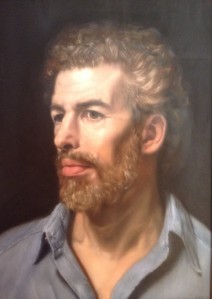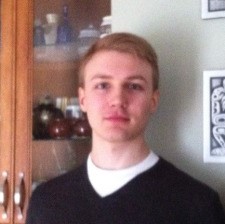In-Sight Publishing
Born to do Math 32 - Louis de Broglie
Born to do Math 32 - Louis de Broglie
Scott Douglas Jacobsen & Rick Rosner
April 8, 2017
[Beginning of recorded material]
Rick Rosner: In
the 1920s, Louis de Broglie found that everything has a wavelength, which is an
uncertainty in space that is inversely proportional to its mass. So it is like
an exercise in a beginning physics class to calculate the wavelength of a
baseball or the uncertainty in space of a baseball because a baseball has like
– I dunno – 10^29th atoms or something. I forget. Anyway, its
uncertainty in space is super tiny – to the point where you’ll never, ever,
have to worry – in practical terms – about the uncertainty in space of any
macroscopic object.
We are able to walk
through the world barely ever experiencing the deep spatial uncertainty of
positions of objects in space. I mean, we can make errors ourselves about where
things are, but the universe itself is not entirely sure where things are,
never comes into play, or almost never. Almost every aspect of the world in
which we live has that tiny uncertainty that is so small that we are never
aware of it.
We can use numbers,
which are perfectly exact to represent things. That you look at the newspaper
and you see a house with a 3-car garage. There are tiny uncertainties in
everything that you are looking at, whether a house is a house or a garage is a
garage or that set of 3 garages is really 3. You can imagine ridiculous
situations in which that comes into question, but in reality houses are really
houses and our ideas of houses conform to houses and garages to garages.
Weird variations of
that never come into play. So we’re able to use precise shortcuts in a world
that is not perfectly precise, but is precise enough for our purposes.
Scott Douglas Jacobsen: I like that.
[End of recorded material]
Authors[1]

Rick Rosner
American Television Writer
RickRosner@Hotmail.Com
Rick Rosner

Scott Douglas Jacobsen
Editor-in-Chief, In-Sight Publishing
Scott.D.Jacobsen@Gmail.Com
In-Sight Publishing
Endnotes
[1] Four format points for the session article:- Bold text following “Scott Douglas Jacobsen:” or “Jacobsen:” is Scott Douglas Jacobsen & non-bold text following “Rick Rosner:” or “Rosner:” is Rick Rosner.
- Session article conducted, transcribed, edited, formatted, and published by Scott.
- Footnotes & in-text citations in the interview & references after the interview.
- This session article has been edited for clarity and readability.
- American Psychological Association. (2010). Citation Guide: APA. Retrieved from http://www.lib.sfu.ca/system/files/28281/APA6CitationGuideSFUv3.pdf.
- Humble, A. (n.d.). Guide to Transcribing. Retrieved from http://www.msvu.ca/site/media/msvu/Transcription%20Guide.pdf.
License
In-Sight Publishing and In-Sight: Independent Interview-Based Journal by Scott Douglas Jacobsen is licensed under a Creative Commons Attribution-NonCommercial-NoDerivatives 4.0 International License.
Based on a work at www.in-sightjournal.com and www.rickrosner.org.
Copyright
© Scott Douglas Jacobsen, Rick Rosner, and In-Sight Publishing and In-Sight: Independent Interview-Based Journal 2012-2017. Unauthorized use and/or duplication of this material without express and written permission from this site’s author and/or owner is strictly prohibited. Excerpts and links may be used, provided that full and clear credit is given to Scott Douglas Jacobsen, Rick Rosner, and In-Sight Publishing and In-Sight: Independent Interview-Based Journal with appropriate and specific direction to the original content.
No comments:
Post a Comment